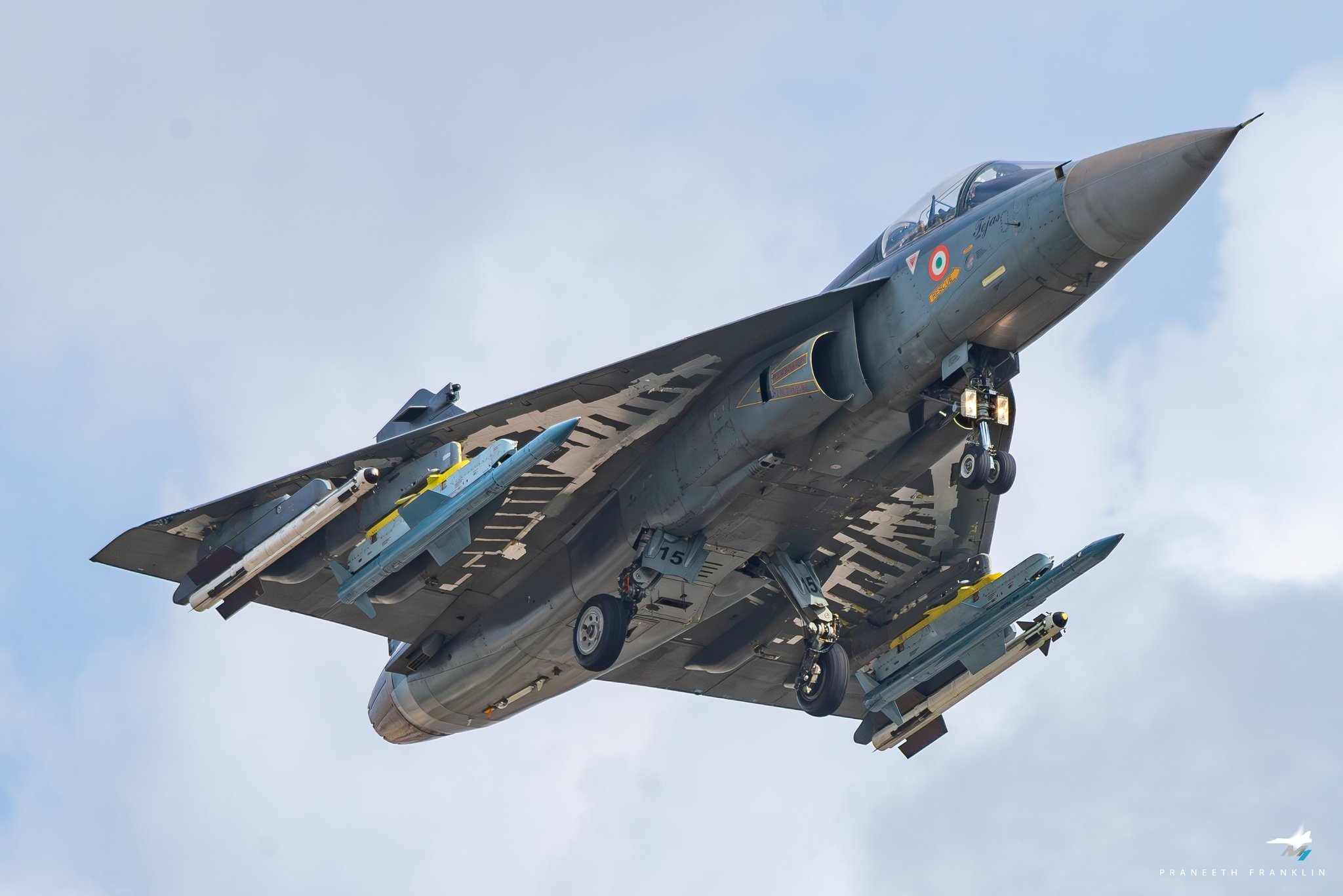The Light Combat Aircraft Tejas (LCA Tejas) stands as a testament to India’s prowess in indigenous aerospace technology, representing a cutting-edge single-seat, single-engine multirole fighter aircraft. Developed by the Aeronautical Development Agency (ADA) and Hindustan Aeronautics Limited (HAL), the LCA Tejas embodies advanced features and capabilities tailored to fulfill the diverse operational needs of the Indian Air Force (IAF) and Indian Navy.
Design and Development: Launched in 1983, the LCA Tejas program aimed to design and produce an agile, technologically advanced fighter aircraft. Spearheaded by ADA, the program brought together the expertise of various Indian defense organizations, resulting in an aircraft that incorporates state-of-the-art systems and materials.
Features and Capabilities:
- Composite Construction: The aircraft’s airframe extensively employs carbon-fiber composites, reducing weight while maintaining structural integrity. This strategic use of materials enhances the aircraft’s maneuverability, fuel efficiency, and overall performance.
- Avionics Suite: Equipped with an array of sophisticated avionics, the Tejas boasts the EL/M-2032 radar for both air-to-air and air-to-ground targeting. The aircraft’s glass cockpit, hands-on-throttle-and-stick (HOTAS) controls, and helmet-mounted display and sight (HMDS) technology provide enhanced situational awareness and operational efficiency.
- Fly-by-Wire Control: The advanced fly-by-wire flight control system ensures precise handling, stability, and maneuverability. This system empowers the aircraft to execute complex aerial maneuvers with remarkable agility.
- Engine and Propulsion: Propelled by a customized GE F404-GE-IN20 engine, the Tejas achieves impressive thrust-to-weight ratio and high-performance capabilities, including supersonic flight and rapid acceleration.
- Weapon Integration: The Tejas boasts a comprehensive range of weaponry, including beyond-visual-range (BVR) and short-range air-to-air missiles, laser-guided bombs, precision-guided munitions, and more. This array of armaments equips the aircraft to engage aerial and ground-based targets effectively.
Development Phases:
- Technology Demonstrators (TD):
- TD-1 (KH2001) first flew on 4 January 2001.
- TD-2 (KH2002) took to the skies on 6 June 2002.
- Prototype Vehicles (PV):
- PV-1 (KH2003) conducted its inaugural flight on 25 November 2003.
- PV-2 (KH2004) achieved its first flight on 1 December 2005.
- PV-3 (KH2005) took to the air on 1 December 2006.
- PV-5 (KH-T2009) first flew on 26 November 2009, as a fighter/trainer variant.
- PV-6 (KH-T2010) had its maiden flight on 8 November 2014, as another fighter/trainer iteration.
- Naval Prototypes (NP):
- NP-1 (KHN-T3001), a two-seat naval variant for carrier operations, rolled out in July 2010, and its first flight was on 27 April 2012.
- NP-2 (NAVY3002), a single-seat naval variant, made its first flight on 7 February 2015, demonstrating ski-jump take-off and arrested landing capabilities for STOBAR carriers.
- NP-5 (NAVY3005) made its maiden flight on 18 August 2023 from HAL Airport.
- Limited Series Production (LSP) Aircraft:
- LSP-1 (KH2011) debuted on 25 April 2007 with the F404-F2J3 Engine.
- LSP-2 (KH2012) first flew on 16 June 2008, featuring the F404-IN20 engine.
- LSP-3 (KH2013) achieved its inaugural flight on 23 April 2010, equipped with the Hybrid Multi-Mode Radar (HMMR).
- LSP-4 (KH2014) flew in June 2010, representing the Mark 1 configuration with advanced systems.
- LSP-5 (KH2015) achieved IOC standard on 19 November 2010, with comprehensive sensors and an auto-pilot.
- LSP-7 (KH2017) took its first flight on 9 March 2012, contributing to design refinements.
- LSP-8 (KH2018) completed flight trials in March 2013, serving as the production base.
General Characteristics:
- Crew: 1 or 2
- Length: 13.2 m (43 ft 4 in)
- Wingspan: 8.2 m (26 ft 11 in)
- Height: 4.4 m (14 ft 5 in)
- Wing Area: 38.4 m² (413 sq ft)
- Empty Weight: 6,560 kg (14,462 lb)
- Gross Weight: 9,800 kg (21,605 lb)
- Max Takeoff Weight: 13,500 kg (29,762 lb)
- Fuel Capacity: 2,458 kg (5,419 lb) internal; various drop tank configurations
- Payload: 5,300 kg (11,700 lb) external stores
- Powerplant: 1 × General Electric F404-GE-IN20 afterburning turbofan with FADEC, 85 kN (19,000 lbf) with afterburner
Performance:
- Maximum Speed: 1,980 km/h (1,230 mph, 1,070 kn)
- Maximum Speed: Mach 1.6
- Range: 1,850 km (1,150 mi, 1,000 nmi)
- Combat Range: 500 km (310 mi, 270 nmi) with internal fuel
- Ferry Range: 3,200 km (1,986 mi, 1,726 nmi) with 2 external drop tanks
- Service Ceiling: 16,000 m (53,500 ft)
- G Limits: +9/−3.5
- Wing Loading: 255.2 kg/m² (52.3 lb/sq ft)
- Thrust/Weight Ratio: 1.07
Armament:
- Guns: 1x 23 mm twin-barrel GSh-23 cannon
- Hardpoints: 9 with a capacity of 5,300 kg, capable of carrying rockets, air-to-air and air-to-surface missiles, bombs, and more.
- BVR – Derby, Astra and Astra MK2 & 3 in future.
- WVR – Python 5, R73 and ASRAAM in future.
- Bombs – Hammer & More
- Avionics: Elta EL/M-2032 hybrid multi-mode fire control radar (Tejas Mk.1)
- DARE-Elisra Mayawi self-protection suite (Tejas Mk.1)
- MIL-STD-1553B bus
The LCA Tejas stands as a testament to India’s aerospace achievements, boasting advanced technologies, impressive performance, and a versatile array of armaments for air-to-air and air-to-ground missions. The Tejas program’s evolution from concept to a combat-ready aircraft showcases India’s commitment to technological advancement and self-sufficiency in defense capabilities.
